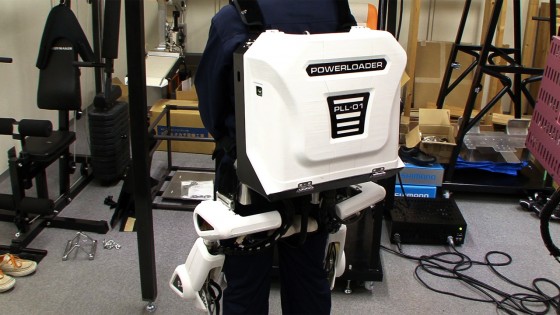
Robohub.org
Power Loader power amplification exoskeleton robot

This power amplification robot, called Power Loader, is currently under development by Activelink, a Panasonic subsidiary venture.
The aim is to achieve a robot that can freely utilize power beyond human strength, in emergencies or on construction sites. Power Loader’s role is to link people with construction machinery.
“Power Loader receives the force input by a person through its force sensors, and amplifies it using motors. In this way, it assists the person, by producing a large force that the person can’t achieve alone. The concept we’ve used to develop Power Loader is, you get into it, rather than wearing it. Using this concept makes it safer to operate.”
When Power Loader was first developed, Activelink made a very large version. But following the accident at the Fukushima Daiichi nuclear plant, development has shifted to Power Loader Light, a more compact version.
“In each sole, there’s a six-axis force sensor. In line with the force vectors detected there, three axes for each leg are used to control motors in the ankle, knee, and hip, exerting a force in the direction of support.”
“We want to make Power Loader capable of carrying 50-60 kg while moving with agility. The legs could be used to support something very heavy, such as a radiation suit, and we think it could also carry 50-60 kg easily using the robot arms.”
This equipment serves as a platform for research on power loader control, which is being considered by Activelink and the Japan Atomic Power Company. It can be used to carry 30 kg with one arm, while exerting a minimum of effort.
“This is a trial harness, for use in designing a connection to the Power Loader Light legs. We’ve made it as compact as possible while producing this much power.”
“After that, we’re considering a very large version. The big Power Loader, which we were developing before, uses 22 motors. We’d like to achieve an exoskeleton with that kind of all-axis assist. When we do that, we think we’ll have a robot that can carry at least 100 kg easily.”
tags: c-Research-Innovation, exoskeleton, Prototype




